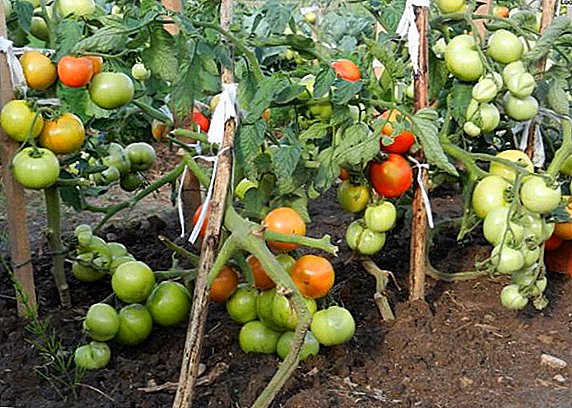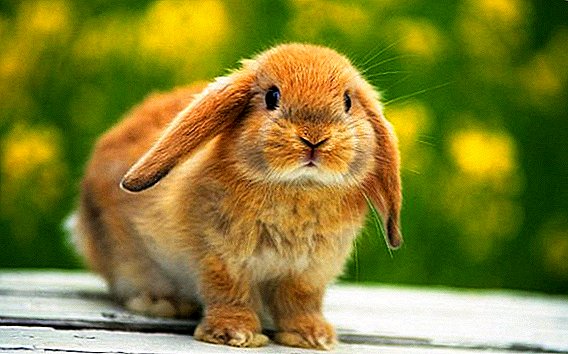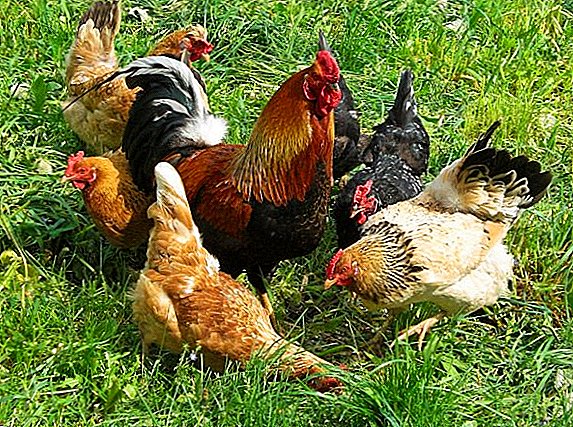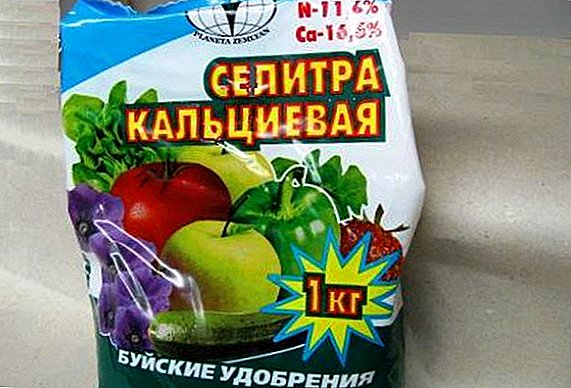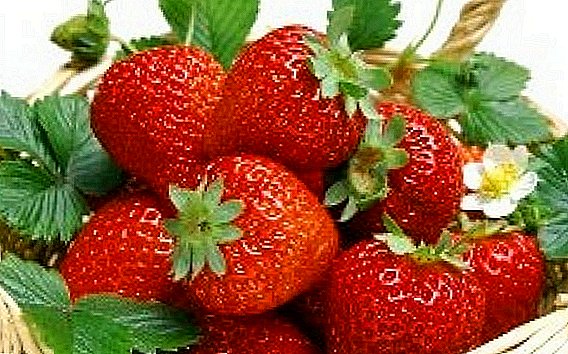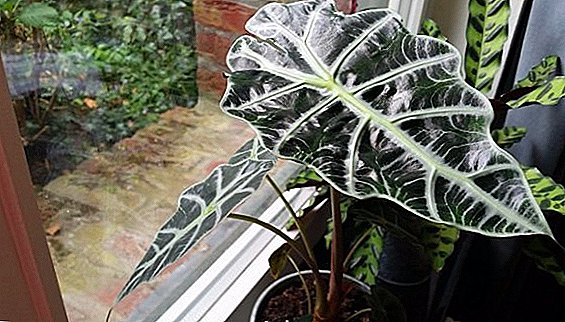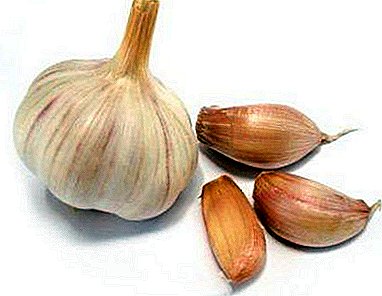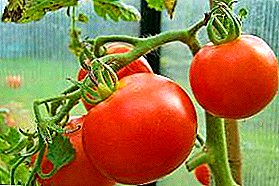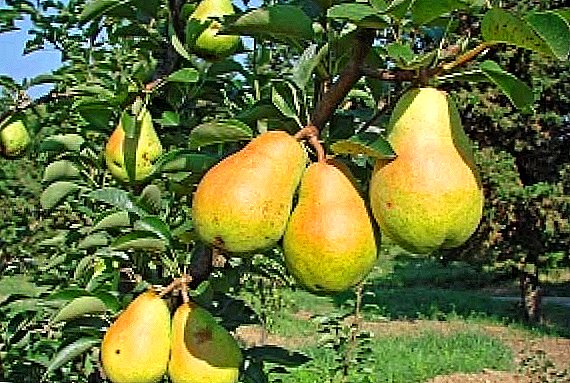
It is known that proper nutrition is part of the "foundation" of human health.
An integral part of a healthy lifestyle is the consumption of fruits and vegetables.
It is from these foods that a person receives substances known as vitamins.
Summer is the most favorable period for the flowering and ripening of the fruits of various trees and bushes.
Therefore, it is in the summer that we can get nutrients from vegetables, fruits, and berries.
One of the sources of vitamins is pear.
Consider a closer group of dessert varieties of pears "Duchess". "Duchess pear" includes two varieties of pears - "Duchess summer" and "Duchess winter."
Description varieties "Duchess summer"
A group of varieties of pears "Duchess" was bred by the famous breeder, the Englishman Wheeler, and Williams spread this culture.
The tree of the summer "Dushes" is medium-thick or low-growth. The crown is wide, with a large number of leaves, has the shape of a pyramid. The leaves of the crown are large, have an oval shape, smooth and shiny surface, pointed at the end. The number of flowers in the inflorescence reaches 6-7 pieces. For this variety is characteristic later and long flowering. In addition, the flowers are well tolerated by changes in weather conditions.
Fetus size can be both medium and large, weighing up to 180g. The shape is typical for this plant species, slightly oblong. The color of the fruit varies depending on the ripening period: first, the skin is light green, then yellow. The flesh of the fruit is juicy, cream-colored, sweet. Because of its taste, "Duchess summer" is considered one of the best dessert pear varieties.
The fruits on the tree hold tight until fully ripe in late August. Almost ripe pears do not lose their presentation for two weeks. The yield of this variety is high, 230-250 kg of pears from one tree.
Virtues

-high yield
-pleasant taste
- almost not damaged by scab
- lightness in transportation
- lack of soil requirements
disadvantages
- badly damaged by aphids
-the average degree of resistance to drought and frost
Description varieties "Winter Duchess"
"Duchess winter" was launched in Belgium. Tree high, growing long enough, the crop can be obtained 7-8 years after planting. It has a wide crown in the shape of a pyramid. Leaves are elliptical, medium size. Fruit This variety is quite large, the weight reaches 350-400 g, sometimes 600 g. They have an attractive trade dress, smooth surface of yellow color with a red spot.
The flesh of the fruit is white, juicy, has a sweet-sour taste. Despite the fact that the fruits can stay on the tree for a long time, they may fall due to weather conditions or soil characteristics, since the whole fruit is large. You should not take an immature crop, otherwise all taste qualities will be lost. As for yields, the indicators are average (90-100 kg of pears from one tree).
Harvest should be in October. "Winter Duchess" tends to ripen during storage without loss of taste. Pears can ripen until December, and in a cool place they can lie until May.
Virtues
- large size of fruits
- no damage during storage
-the ability to ripen during storage
disadvantages
-low frost resistance
- sprinkling of fruits
-high degree of scab damage
-loss of pear taste during premature harvest.
Landing features

The most favorable time for planting pears - the second half of April, before bud break. It is possible to plant pears both in holes, and in previously prepared mounds. If the soil is poor, then you need to make a pit for planting, and inside fill up the fertile soil, and do it in the fall. The depth of such a pit is about 1 m, the diameter is 60-70 cm. It is impossible for trees to go deep, as this will lead to the death of the plants.
When planting, do not pour fresh manure into the pit, as this may cause burns on the roots. It is better to “improve” the soil with a mixture of fertile land, compost and peat (2-3 buckets per pit). From this mixture you need to form a cone and distribute the roots of the seedling on it. Also, the future tree needs support against the wind, so you need to drive a stake deep into the ground and tie up the seedling trunk to the support. Garter is better to do in the form of "eight" in order to avoid damage to the trunk.
Both varieties of the group "Duchess" self-infertile, that is, they also need a pollinator. For the summer "Dushes" fit such pollinators as Favorite Clapp, Forest Beauty, Bere Bosc, Olivier de Serre. In turn, the winter “Duchesse” needs “Olivier de Serre”, “Bere Ardanpon” and others. Also these varieties need different soils. If “Williams” is unpretentious to the soil, then winter “Duchesse” (or winter Dean) requires fertile land in warm and protected places.
It is also interesting to read about the correct planting of pears in the fall.
Pear care
1) Watering
Dyushes trees tolerate the lack of moisture in the soil, but they still need to be watered. The volume of such irrigation is 2-3 buckets of water per year of tree life. You need to water before flowering and after flowering (end of May - beginning of June). If necessary, you can water the trees in the fall. After the soil is filled with moisture, it is necessary to loosen the ground to open access of oxygen to the root system.
2) Mulching
Mulching is a must-have procedure for all fruit trees. With the onset of cold weather, unprotected roots can freeze, and as a result, the plant simply will not survive until spring. Mulching protects the root system from temperature extremes. Pears are better to mulch manure, humus. If this is not possible, then you can use weeds, grass. Mulching should be done before the period of lowering temperatures, that is, in the beginning - mid-autumn.
3) Harboring

To protect the pear from the damaging effects of frost and winter winds, it is necessary to wrap the lower part of the trunk with cotton cloth or newsprint. After the snow falls, you need to collect it as much as possible around the seedling. Snow is the best protection of the root system from the cold, but on the condition that there are no serious frosts yet.
As for mature trees, they simply need protection against hares. To do this, you need to make a small fence around each tree, or a common fence of the entire site.
4) Pruning
Pruning is best done in the spring, as in winter damaged areas can be damaged by low temperatures, and in summer, along with the branches, leaves will also have to be removed, which can lead to disastrous consequences for a young tree. During the first year, it is necessary to cut off approximately ¼ the central part of the trunk, and the lateral branches above the buds.
Thus, the pear will grow not only high, but also in breadth, which will lead to the emergence of new buds. But the second year the central part needs to be shortened by 20-25 cm, and from the side branches to form a truncated cone - the upper branches should be shorter than the lower ones. Shorten the side branches can be 5-8 cm.
5) Fertilizer
During the first year of growth, pears do not need additional feeding, because they improved the ground in the pit during planting. Most of the fertilizer needs to be applied in the fall. Mineral fertilizers need to be made annually, organic - once in 3 years. Per 1 sq.m. It is desirable to add 5–8 kg of organic fertilizers, 30–20 g of superphosphate, 20–30 g of potassium chloride, and 20–25 g of ammonium nitrate. Any dressing should be made in the pits a depth of 15-20 cm around the perimeter of the circle, which describes the crown.
6) Protection
Since "Duchess" is damaged by scab and sucker, then you need to consider methods to protect trees from pests.
Scab - one of the most common diseases of pear. Both the leaves and the fruits themselves can be exposed to the fungus. Scab is transmitted through fallen leaves. Dark spots appear on infected leaves and fruits.
It is possible to fight this disease by treating trees with 1% Bordeaux liquid or 0.5% copper oxychloride solution during bud break and at the end of flowering. It is also necessary to burn old leaves and cultivate the ground around the tree with a 0.3% nitrafen solution.
Pear sucker hibernates in fallen leaves, fruit buds. Infection occurs by laying eggs in the kidneys and on the leaves. Medianitsa sucks the sap from the tree, so it weakens. To combat the pest, it is necessary to spray trees with ole-cohort, karbofos (90g per 10 liters of water), etc. before planting buds. In order to destroy the larvae of the sucker in the period of active growth of the pear it is necessary to process the tree with organophosphate insecticides


